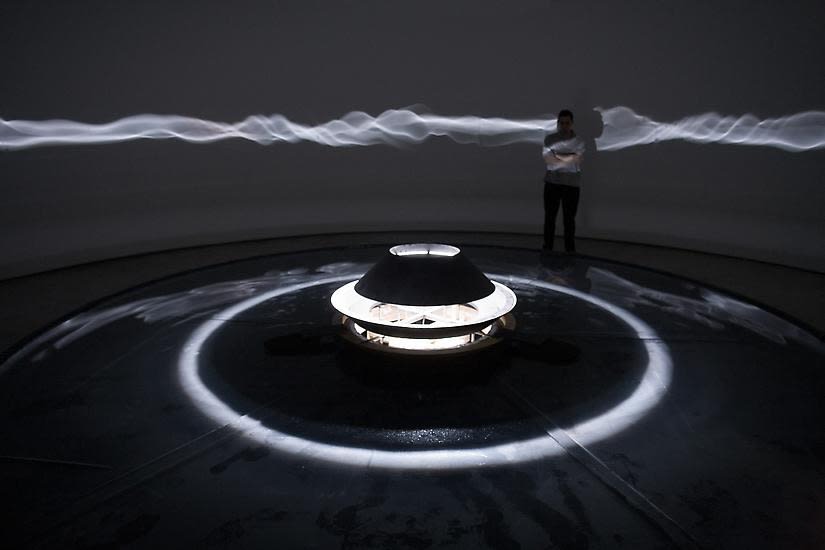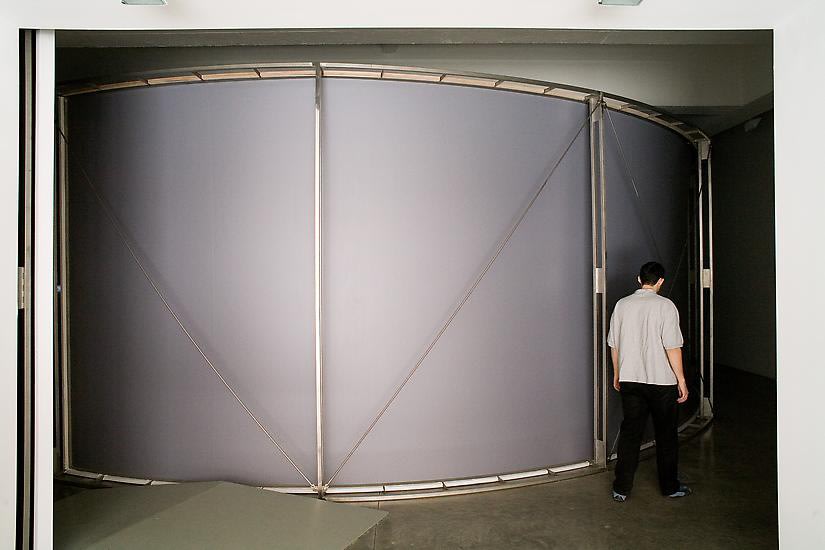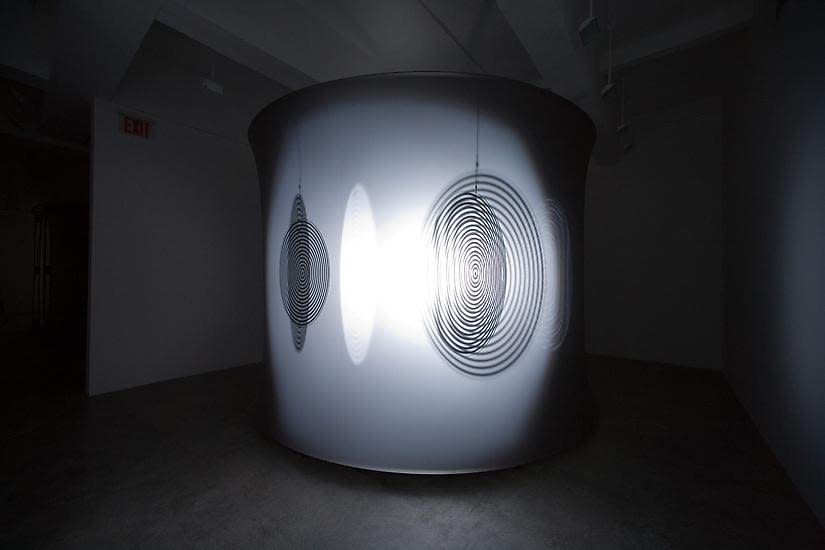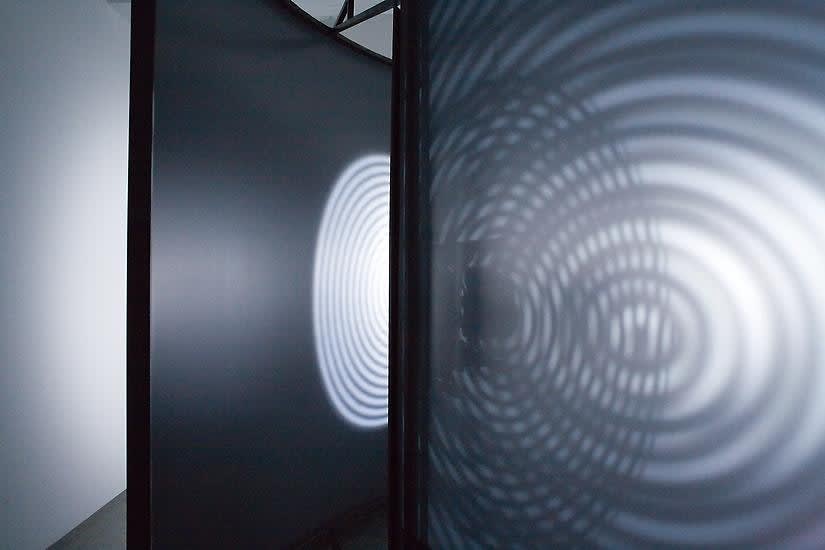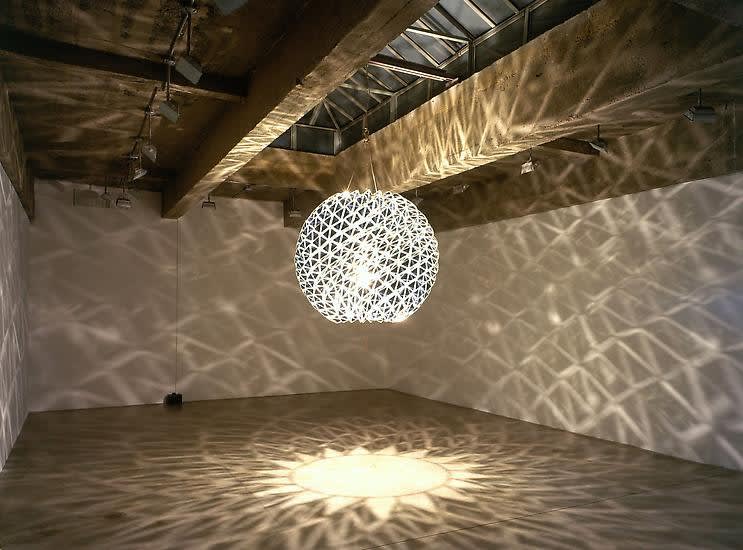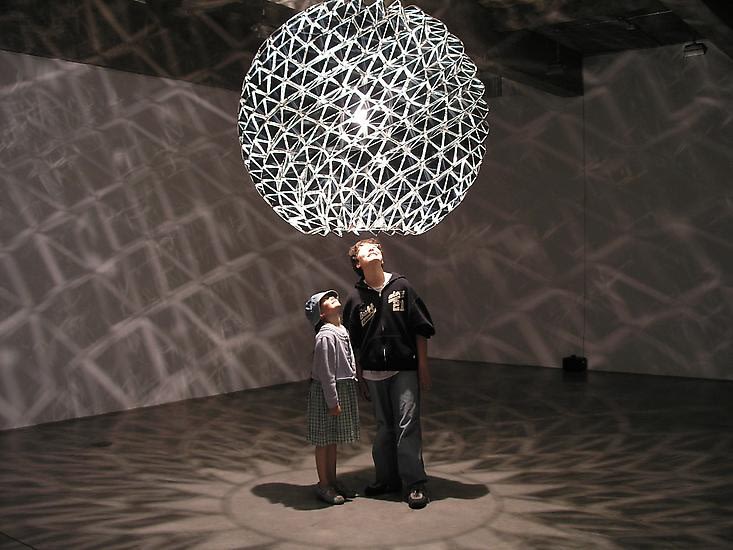Olafur Eliasson: Your engagement sequence: Tanya Bonakdar Gallery, New York
Tanya Bonakdar Gallery is very pleased to present Your engagement sequence, Olafur Eliasson’s fifth solo exhibition at the gallery.
Through his installations, sculpture and photography, Olafur Eliasson suggests that perception must be studied and understood within the context of one’s environment and as a construction of culture. The artist has created numerous works, or situations, that present opportunities for visitors to engage with basic, familiar elements such as water, light, wind, temperature or vegetation and to observe them in an unfamiliar context. Often these situations provoke experiences and interactions to which the visitors themselves contribute, as much as any element or environment provided by the artist. Indeed, it is the realignment and reconfiguration of the traditional subject / object relationship within the context of contemporary art that serves as the core of Eliasson’s artmaking practice. Eliasson is also interested in the effect of time upon the understanding of space, thus making art that can be considered “temporal.” It is widely understood that time, is perhaps the fourth dimension and we cannot understand the universe without acknowledging that space (and our surroundings in general) changes over a given duration. Further, if we agree that every individual, indeed every fragment of energy or mass, has an effect upon every other fragment of energy and mass in the universe, then Eliasson suggests that this “effect,” must also be taken into consideration as we attempt to understand the world. Eliasson has even proposed a new metric, or term, for this “effect:” Your engagement sequence, or YES, for short. In the artist’s words:
“...YES, or the fifth dimension, creates a perspective that is personal; it functions to individualize the other dimensions of space. I am interested in the potential inherent in giving the individual subject this dimensionality as a sort of tool that relativizes the other existent, presumed static dimensions upon which our conception of space is based.... By including YES as a central element of perception, the governing dogma of timelessness and static objecthood may be renegotiated, thus making your responsibility for an active engagement in the concrete situation apparent... In other words, engagement has consequences and these entail some feeling of responsibility. ”
